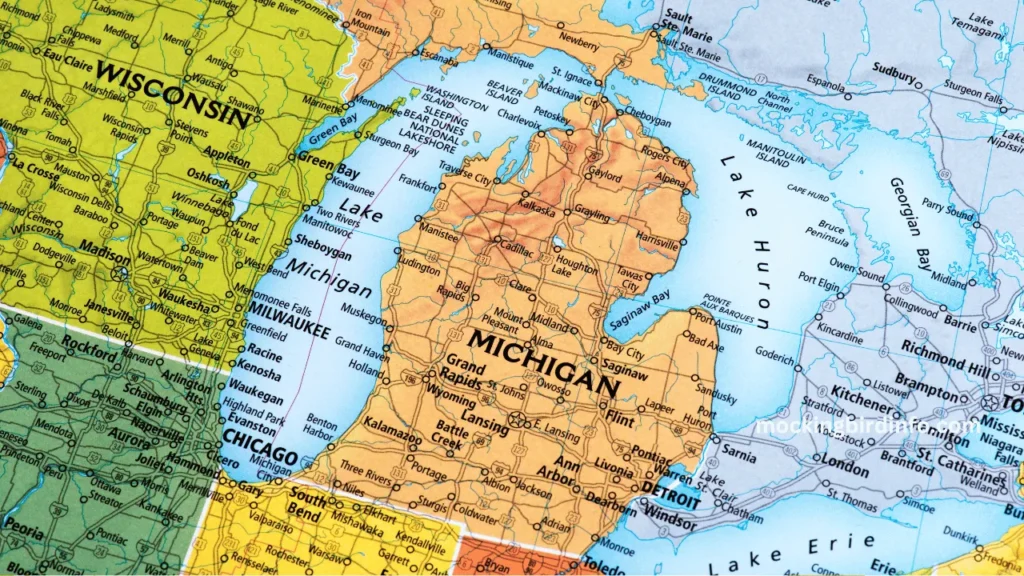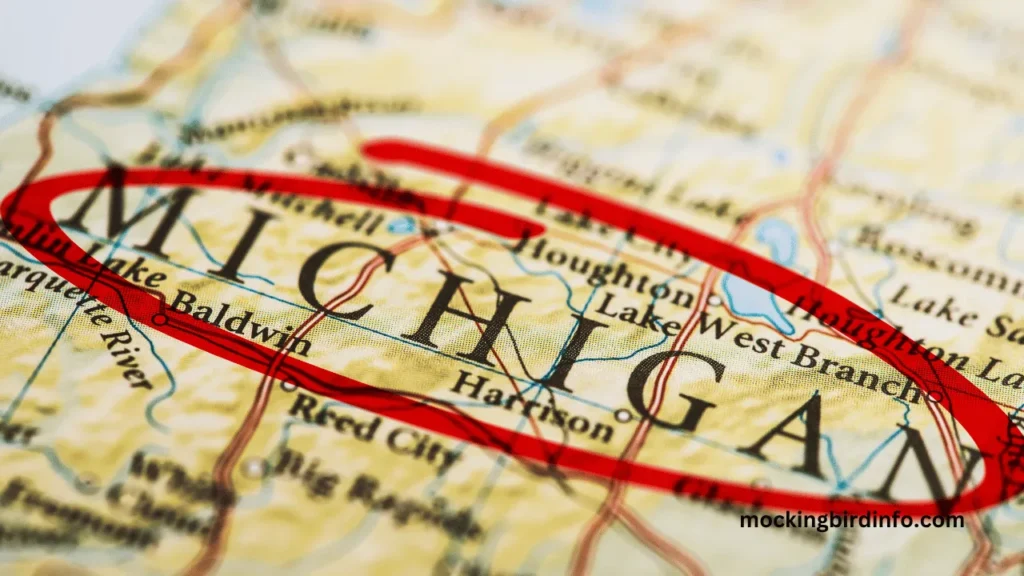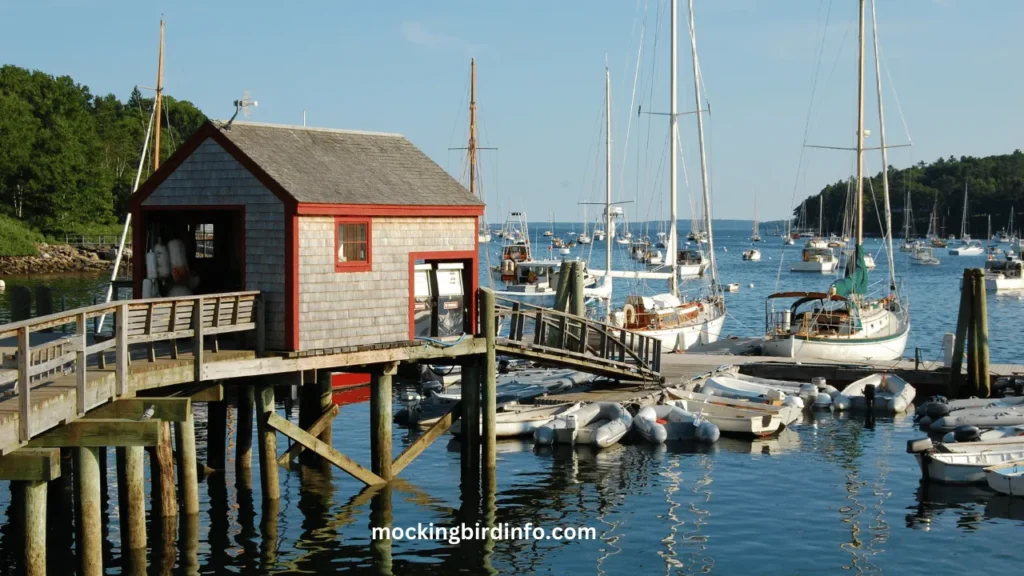Have you ever been out for a walk on a crisp Michigan morning and heard a bird mimic the sounds of car alarms, dog barks, or even the calls of other birds? That’s the magic of the mockingbird, a fascinating creature known for its incredible vocal skills.
However, while the mockingbird is an iconic symbol of the southern U.S., its presence in Michigan is somewhat of a mystery for many. With its ability to adapt to diverse environments, the question arises: Does Michigan have mockingbirds?
While mockingbirds are not native to Michigan, their growing presence in the state has captured the attention of birdwatchers and environmentalists alike. In recent years, this bird species has been observed more frequently, particularly in urban and suburban areas.
So, how did these southern dwellers make their way north, and what does their presence mean for Michigan’s ecosystems? In this article, we will explore the various factors behind the rise of mockingbirds in Michigan, including the effects of climate change, human-assisted dispersal, and the habitat available to them.
As we delve into the history of the mockingbird’s range expansion, we will also examine its impact on the environment and local bird species. Understanding why and how these birds are adapting to life in Michigan helps us better grasp the dynamic relationship between wildlife and the rapidly changing world around us.
Keep reading as we explore the fascinating story of mockingbirds in Michigan and what the future might hold for them.

Contents
- 1 Natural Range of Mockingbirds
- 2 Factors Contributing to Mockingbird Presence in Michigan
- 3 Potential Impact of Mockingbirds in Michigan
- 4 Monitoring and Management of Mockingbirds in Michigan
- 5 FAQs:
- 5.1 1. Are mockingbirds native to Michigan?
- 5.2 2. How did mockingbirds get to Michigan?
- 5.3 3. Do mockingbirds compete with native birds in Michigan?
- 5.4 4. What impact do mockingbirds have on Michigan’s ecosystems?
- 5.5 5. Are mockingbirds aggressive toward humans?
- 5.6 6. What kind of habitat do mockingbirds prefer in Michigan?
Natural Range of Mockingbirds
The mockingbird (Mimus polyglottos) is primarily found in the southern and eastern United States, with its native range extending from Texas to the Southeast, and even parts of Mexico.
The bird is known for its exceptional mimicry, capable of imitating more than 200 different species of animals, including other birds, mechanical sounds, and even human-made noises. Mockingbirds thrive in open habitats with abundant food sources, such as insects, berries, and other small fruits.
Historically, the mockingbird’s range has been confined to the southern half of the U.S., where warmer climates and mild winters provide the ideal conditions for these birds to survive year-round.
They typically inhabit shrubs, woodlands, and urban areas, finding refuge in a variety of environments. While the bird is a symbol of southern charm, its northern expansion has been a gradual process, largely influenced by human activity.
As the human population expanded, especially in the 20th century, mockingbirds began to make their way into northern areas. The availability of landscaped parks, urban gardens, and suburban habitats created new opportunities for these birds to thrive.
However, their migration northward was slow, and they remained largely confined to the southern U.S. until the last few decades.
Factors Contributing to Mockingbird Presence in Michigan
In recent years, the presence of mockingbirds in Michigan has been linked to several factors that have made it easier for them to settle in northern states. One significant influence is climate change.
Warmer temperatures and milder winters have allowed mockingbirds to survive and even thrive in parts of Michigan where they previously couldn’t. Over the past few decades, global warming has created a more favorable environment for these birds, as they are able to stay year-round in areas where snow and freezing temperatures once made their survival difficult.
Another contributing factor to their increasing presence is human-assisted dispersal. As people move around and relocate plants, birds, and other species, some unintentionally introduce mockingbirds to new areas.
In fact, many birds have been transported over great distances as a result of human activity, from moving ornamental plants with birds nesting in them to releasing captive birds that escape into the wild.
In Michigan, it is possible that mockingbirds have been introduced in this way, either intentionally or by accident, as the birds adjust to the urban and suburban landscapes of the state.
Additionally, habitat suitability plays a significant role. Mockingbirds are highly adaptable birds, and urban environments with diverse vegetation, food sources, and suitable nesting sites offer an inviting home.
Michigan’s expanding urban areas provide a diverse mix of habitat types, from parks to residential areas, making it a suitable environment for mockingbirds to settle in. With a range of available resources and relatively few natural predators, mockingbirds have been able to find their niche in Michigan’s cities and towns.

Potential Impact of Mockingbirds in Michigan
While mockingbirds might be a fascinating addition to Michigan’s bird population, their presence is not without potential consequences. One concern is competition with native birds for limited resources.
Mockingbirds, being territorial birds, often claim large areas for nesting and food collection. This behavior can lead to conflicts with smaller native bird species, such as sparrows, wrens, and finches, that might be vying for the same resources.
Additionally, the introduction of a non-native species can have ripple effects throughout the ecosystem. The presence of mockingbirds may disrupt local food webs, especially if they outcompete native birds for food and nesting sites.
The territorial nature of mockingbirds can also impact the reproductive success of other birds, leading to fewer young birds in the area. Furthermore, mockingbirds may pose a threat to smaller bird species, as they are known to sometimes prey on eggs and young chicks of other birds, adding another layer of concern to their growing numbers.
However, there are also positive ecological impacts. Mockingbirds help control insect populations by feeding on a wide variety of insects. This can be especially beneficial in urban environments where pests are abundant.
Additionally, mockingbirds are seed dispersers, helping to spread plant seeds through their droppings. This can contribute to the health of local ecosystems by promoting plant growth and diversity.
Human-Bird Interactions in Michigan
As mockingbirds continue to establish themselves in Michigan, their interactions with humans are likely to increase. Mockingbirds are known for their aggressive territorial behavior, which can lead to conflicts with people.
For example, mockingbirds may aggressively defend their nests, especially during the breeding season, and they have been known to attack perceived threats, including humans. While these incidents are generally not dangerous, they can be startling and unpleasant.
Moreover, mockingbirds’ vocalizations can lead to increased human-bird interactions. Their ability to imitate car alarms, dog barks, and other mechanical sounds can create noise pollution in urban areas.
While this behavior is fascinating, it may also become a nuisance for residents who live near mockingbird territories. Their constant singing and calls, especially at night, can disrupt the peace and quiet of neighborhoods.
Another factor to consider is the popularity of birdwatching in Michigan. As mockingbirds become more common in the state, their presence could lead to an increase in birdwatching activities. For many people, encountering a mockingbird’s mimicry is an exciting experience, and they may actively seek out locations where mockingbirds are known to frequent.
Monitoring and Management of Mockingbirds in Michigan
The rise of mockingbirds in Michigan presents a unique opportunity for citizen science. Many birdwatching groups and environmental organizations are already monitoring the distribution of mockingbirds in the state.
By reporting sightings and behaviors, citizen scientists help researchers track how these birds are spreading and how their presence is affecting local ecosystems.
As the population of mockingbirds continues to grow, there may be a need for conservation strategies to ensure that the balance between non-native and native species is maintained. This could include efforts to monitor bird populations, protect native habitats, and mitigate the negative impacts of non-native species.
Public education about the importance of habitat preservation and understanding the role of mockingbirds in local ecosystems will also play a key part in ensuring a sustainable future for Michigan’s bird populations.
Conclusion:
In conclusion, while mockingbirds are not native to Michigan, their presence in the state has become increasingly common in recent years. The factors driving this expansion, such as climate change, human-assisted dispersal, and habitat suitability, have created conditions favorable for these birds to thrive in northern states.
However, their presence also raises important questions about their impact on local ecosystems and native species. The future of mockingbirds in Michigan will depend on continued monitoring, conservation efforts, and public awareness.
As humans continue to influence the natural world, it is crucial that we stay informed about the changing dynamics of our ecosystems and the role that species like mockingbirds play in shaping them.
The mockingbird’s ability to adapt to new environments serves as a powerful reminder of nature’s resilience and the complex relationship between wildlife and the human world.
FAQs:
1. Are mockingbirds native to Michigan?
No, mockingbirds are not native to Michigan but have been increasingly observed in the state due to factors like climate change and human activities.
2. How did mockingbirds get to Michigan?
Mockingbirds likely arrived in Michigan through human-assisted dispersal or as a result of climate change, which created more favorable conditions for them.
3. Do mockingbirds compete with native birds in Michigan?
Yes, mockingbirds can compete with native birds for resources such as food and nesting sites.
4. What impact do mockingbirds have on Michigan’s ecosystems?
Mockingbirds can disrupt local ecosystems by outcompeting native species, particularly in urban areas, but they also contribute by controlling insect populations.
5. Are mockingbirds aggressive toward humans?
Mockingbirds can be aggressive when protecting their nests, and they may attack perceived threats, including humans.
6. What kind of habitat do mockingbirds prefer in Michigan?
Mockingbirds prefer urban and suburban habitats with diverse vegetation, food sources, and nesting sites.








